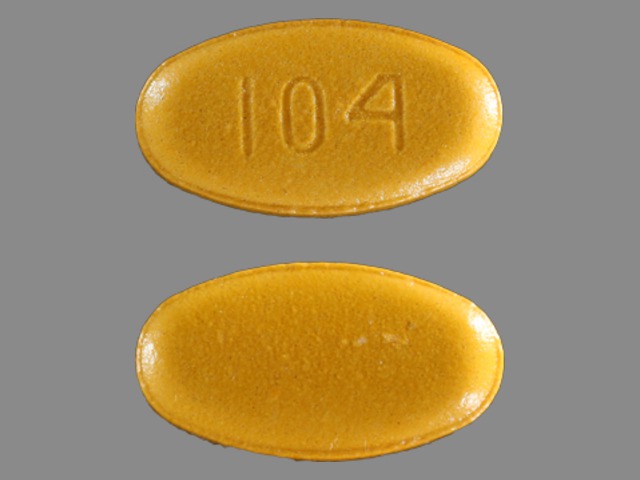Sulfasalazine is an anti-inflammatory drug used to treat various forms of inflammatory bowel disease (IBD), including ulcerative colitis and mild to moderate Crohn’s disease. It works by suppressing the immune system’s inflammatory response in the gastrointestinal tract. It was first developed in the 1940s and was one of the earliest drugs used for the treatment of IBD.
How Does it Work?
Sulfasalazine contains sulfapyridine and 5-aminosalicylic acid (5-ASA) joined by an azo bond. When it reaches the lower intestine and colon, resident bacteria cleave the azo bond, releasing the two components. 5-ASA is the component responsible for sulfasalazine’s anti-inflammatory effects. 5-ASA acts locally in the colon to suppress the production of inflammatory mediators and reactive oxygen species involved in the pathogenesis of IBD. It modulates the body’s immune response by reducing infiltration of inflammatory cells into intestinal tissues and decreasing pro-inflammatory cytokine levels.
Dosing and Administration
It is usually administered orally in divided doses throughout the day. The typical starting dose is 500 mg two to four times daily, gradually increasing over the course of 1-2 weeks to a full dose of 2-4 g per day based on patient tolerance and treatment response. It can also be available in delayed-release formulations for once- or twice-daily dosing. It is important to take sulfasalazine with food and plenty of water to improve absorption and reduce gastrointestinal side effects. Treatment duration varies from patient to patient depending on disease severity and response but is generally long-term.
Efficacy in Ulcerative Colitis and Crohn’s Disease
Numerous clinical studies have established sulfasalazine as an effective option for inducing and maintaining remission in mild to moderate ulcerative colitis. A meta-analysis found that over 50% of patients experience clinical and endoscopic remission on its therapy alone. It also reduces the risk ofUC flare-ups and slows down disease progression when taken long-term. However, it is not as effective for inducing remission in Crohn’s disease as it is in ulcerative colitis. Still, it helps control mild Crohn’s symptoms and can be used as a steroid-sparing agent in some patients.
Side Effects and Toxicity Monitoring
Common temporary side effects of sulfasalazine include nausea, vomiting, abdominal pain, poor appetite, and headache. A very small percentage experience more severe reactions like allergies, blood/liver abnormalities. Long-term use may also increase the risk of infertility in men. As such, baseline and periodic blood monitoring of complete blood counts and liver function is recommended when starting or continuing this to check for signs of toxicity or blood abnormalities. Management of side effects usually involves temporary dose reduction or changing to a different formulation. Permanent discontinuation of this is rarely necessary in most cases.
Drug Interactions
People taking sulfasalazine should inform their doctor about all medications, supplements, and herbal remedies they are taking due to potential drug interactions. Key interactions to be aware of include increased risk of toxicity when combined with other sulfa antibiotics or methotrexate, reduced efficacy of oral contraceptives, and decreased absorption of other concurrently administered drugs such as penicillins or nonsteroidal anti-inflammatory drugs (NSAIDs). Monitoring drug levels and adjusting doses may be needed when combining it with P450 enzyme-inducing or inhibiting medications.
Role in IBD Management
It remains one of the most widely used medications worldwide for treating mildly to moderately active ulcerative colitis. It offers an excellent balance between safety, efficacy, and cost-effectiveness. In Crohn’s disease, it is considered a second-line option for inducing remission in mild cases or as part of combination therapy. It can also be used long-term as a steroid-sparing agent in patients requiring maintenance therapy. For both UC and CD, sulfasalazine plays an important role as a first-line therapy prior to escalating treatment with immunosuppressants or biologics in order to gain disease control at the lowest risk level possible. Its multi-targeted mechanism supports a prolonged clinical response when adherence is maintained.
In summary, it has stood the test of time as a frontline medication for mild to moderate IBD due to its favorable benefit-risk profile, low cost, and overall safety record when monitored appropriately. Further research continues to uncover new therapeutic applications and delivery methods to optimize patient outcomes with this established therapy. It will remain a mainstay in IBD management algorithms globally for the foreseeable future.
*Note:
1. Source: Coherent Market Insights, Public Source, Desk Research
2. We have leveraged AI tools to mine information and compile it.



